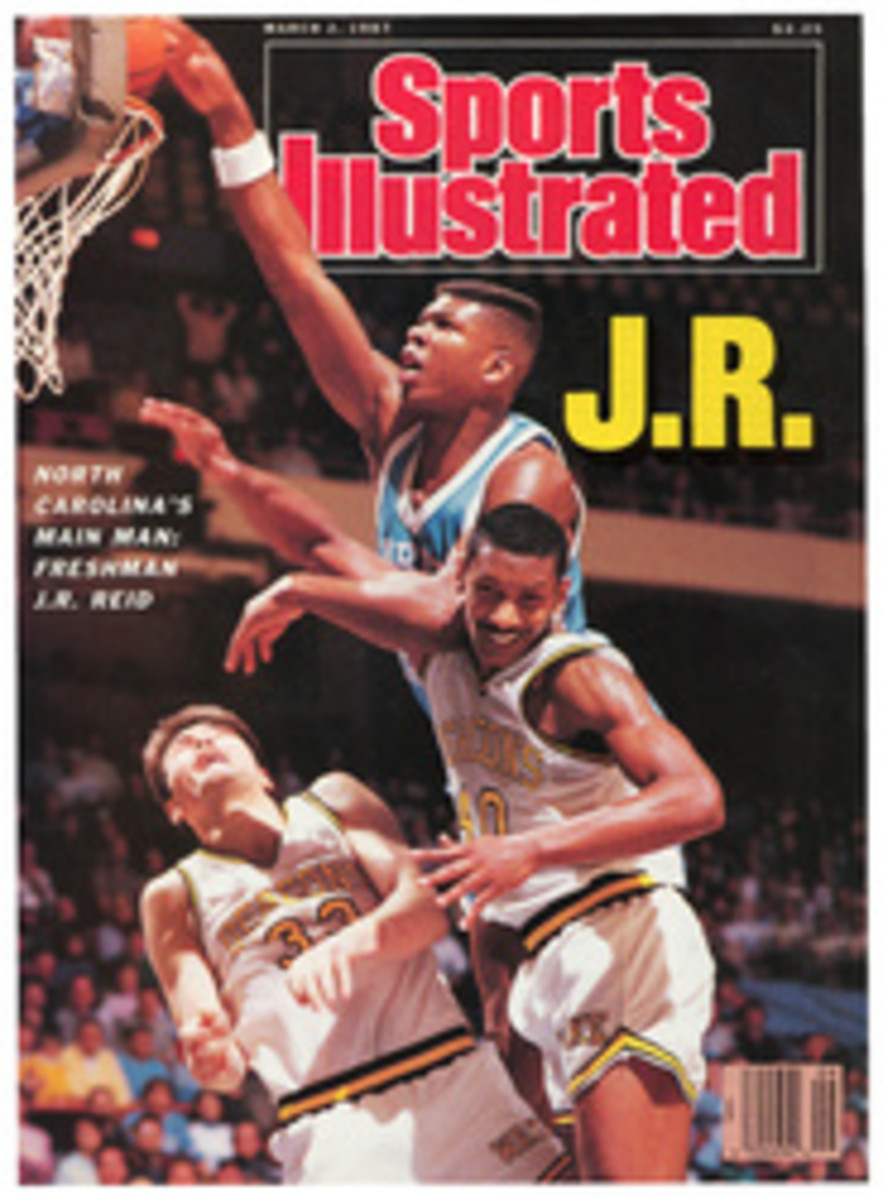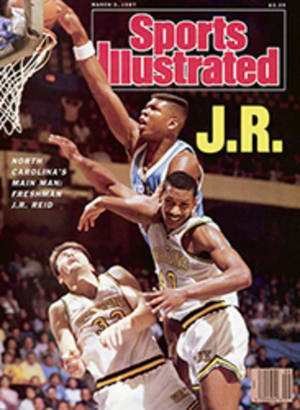
SIGNALS THAT CAN SAVE LIVES
Scott Russell stood just 100 yards from where nine climbers died last spring in one of America's worst mountaineering disasters and surveyed Mount Hood with a respectful gaze. On this beautiful winter day Russell was testing a signaling device, part of a search by the Mountain Signal Memorial Fund Inc. for an effective portable system to locate lost climbers and skiers. The organization was started to help prevent tragedies similar to the one last May that killed seven students and two instructors from Oregon Episcopal School in Portland. Russell, cochairman of the fund, aimed his directional antenna to the east, then grinned. "Looks like this system could be a winner," he yelled, his voice echoing across White River Glacier. His earphones had picked up a repeating homing signal from a transmitter about two inches square, one that was buried in a 75-foot crevasse two miles away.
Russell, 40, who is both a mechanical engineer and a survival instructor, knows the rocks, crevasses and changing disposition of 11,245-foot Mount Hood as well as anyone. He was on the mountain last spring during the rescue attempt and had actually driven his Sno Cat to within 50 feet of where the bodies were found two days later. "There's no reason for anybody to die the way those kids did," he said. "If we'd had a system like this during our rescue efforts, we would have found the snow cave [in which the climbers huddled] in time, and those lives would have been saved."
Russell had reason to smile as he listened to the signal. Since beginning the search to find the right rescue system, Russell and Mountain Signal have been frustrated by a series of financial, legal and technical problems. The beeps coming through Russell's earphones were the best sound the mountain rescue folks had heard in a long time.
Mountain Signal Memorial Fund, a nonprofit Oregon corporation, was established by concerned citizens in the Portland and Mount Hood areas shortly after the Mount Hood tragedy. Convinced that some sort of signaling system would significantly facilitate search operations and help ensure the safety of victims and searchers alike, the fund's committee sent 200 letters around the world—to such places as the Colorado Search and Rescue Board, Austrian ski resorts and Hamish MacInnes, a Scottish climbing expert—inquiring about existing systems for tracing climbers. Surprisingly, no affordable lightweight long-range system existed. The committee then began soliciting proposals to create one, while searching for equipment that could serve as a worldwide prototype.
"It's ironic," says Craig Petrie, patrol chief of the Mount Hood Ski Patrol and the other cochairman of Mountain Signal. "We have the technology to see people in Red Square from outer space and to track caribou from thousands of miles away, but we don't have an effective system for finding somebody lost in the woods. It certainly isn't because we don't have the technology."
Although Mountain Signal is trying to find a system only for Hood's accessible south side, mountaineering groups around the world are monitoring the search for their own possible benefit. Still, not everyone shares the Oregon organization's enthusiasm. Several groups view these efforts as an intrusion into the very essence of mountaineering.
One such objection came from the Mountain Rescue Committee of Cheshire, England: "We subscribe to a basic concept of self-sufficiency in our sport," they wrote. "We are strongly against any type of signaling device. It is totally contrary to the ethos of our sport. Fundamentally, we believe the whole concept to be wrong. Technology is not a solution to people's waywardness in the wilds, nor does it improve one's ability."
Petrie is quick to defend Mountain Signal's objectives. "A signaling system would only serve as an aid, not a crutch," he says. "This is not a panacea or a license for people to go into the wilderness and act irresponsibly. The art of survival is having the sense to come in out of the rain. We believe that there is no substitute for education and public awareness of the danger that exists in going onto a mountain. I am continually amazed at the naivetè and poor judgment people use in attempting to climb mountains. I see people climbing Mount Hood in tennis shoes and swimsuits. Freak storms don't kill people; poor judgment and lack of preparation do."
The Mountain Signal group is not the first to try to implement a signaling device. Most prior attempts have been stopped by the same obstacle: the question of liability. And the potential for a lawsuit makes manufacturers and distributors hesitant to invest in a product that has a limited market anyway.
"Let's say we buy 100 transmitters and 101 people turn up one day to climb the mountain," says Petrie. "Are we liable if climber 101 gets lost and dies? Or what if a climber gets lost and his device malfunctions? Or what if he puts his ice ax through the transmitter as he falls in a crevasse, rendering his device useless? Could the Mountain Signal Memorial Fund be sued? The mountaineering shop that rented it? The manufacturer?"
The group's main chance for overcoming the liability crisis may rest with the passing of a special liability exemption by the Oregon legislature. There are indications that state lawmakers are receptive to the idea.
"We will be looking into that possibility in this session, which ends in late June," says State Senator James Simmons. The former Mount Hood Ski Patrol chief is a member of the judiciary subcommittee that was assigned to investigate mountain safety following last spring's disaster, an investigation that critics have called "political grandstanding." "A substantial amount of relief could be achieved through tort reform legislation," says Simmons. "We might be able to reduce liability under Oregon's Good Samaritan Act, a law that limits the liability of people engaged in volunteer rescue. The problem we are facing is that it is difficult to sign away negligence."
After closely examining 40 responses to the 200 inquiry letters, the Mountain Signal group eventually narrowed the list of potential systems to nine. A Swedish product that was developed primarily to find lost skiers and avalanche victims tested well, but its range is only 200 feet. "That wouldn't be effective by itself in searching a large area," says Russell.
Four other systems have already been tested, and three more will be tried out by the end of this month. Thus far only the American model that made Russell smile has met all the group's specifications: that it be waterproof, able to transmit through six feet of snow, durable, affordable, accessible, easy to operate and convenient for climbers to carry on their bodies, and have a 30-mile range. "We also don't want a transmitter that requires 24-hour monitoring," says Russell. "The system should only be activated when somebody is reported missing."
There is no guarantee, of course, that climbers will use any system. "It would be impossible to mandate that people wear this device," says Petrie. "If you can't get people to drive 55, how could you enforce this? You can't have forest rangers patrolling the woods, pulling over anybody who isn't wearing a beeper. One of the attractions of hiking and climbing in the wilderness is the feeling of freedom. People who wear beepers all week long want to get away from electronic gadgets. Still, a signaling system should be available; it just shouldn't be mandatory."
Although the fund is encouraged by the Mount Hood community's support and the positive results of the latest equipment test on Mount Hood, it will be hard-pressed to reach its goal of having a system available for this spring's hiking season. But even if a selection is made soon and the money is raised (over $100,000 has already been donated) and the liability issue is resolved, Russell is quick to issue a warning: "There can be no substitute for common sense in the mountains. That's the key to mountain safety. But if a signaling system can save even one life, and I am absolutely convinced it can, then our efforts will have been worth it."
PHOTO
ANCIL NANCE
Russell listens to beeps from a transmitter buried deep in a distant mountain crevasse.
Larry Colton, a freelance writer who once was a Phillies pitcher, lives in Portland, Ore.

